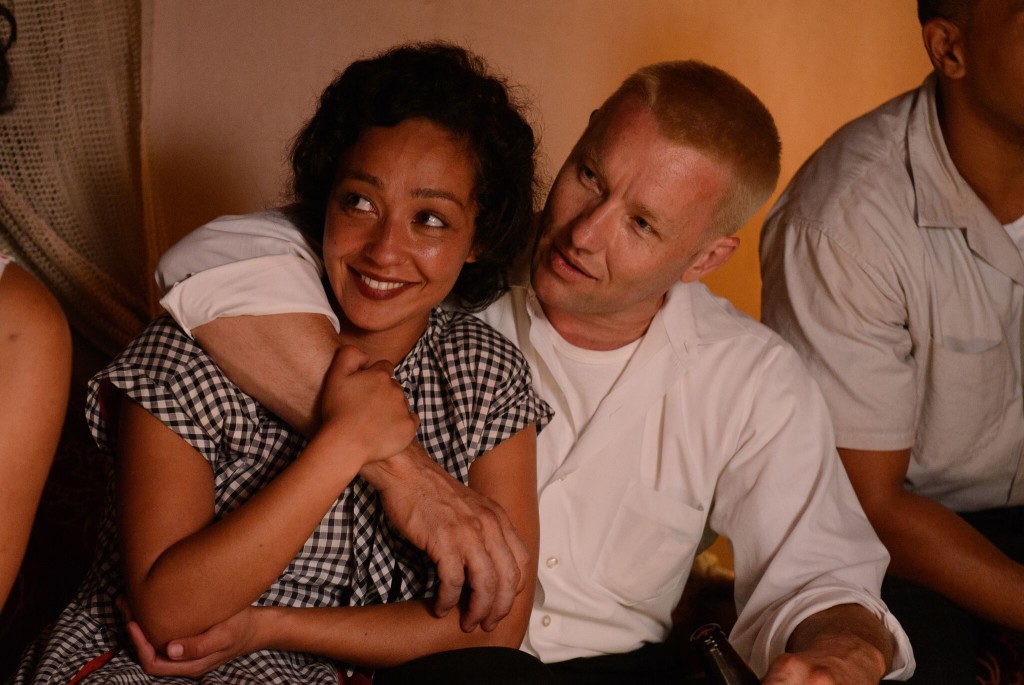
The landmark 1967 US Supreme Court case Loving v. Virginia overturned state laws that banned interracial marriage. Loving is the story of the real couple behind that ruling, and it’s a satisfying love story of two modest people who would rather not have been forced to make history.
Ruth Negga and Joel Edgerton convincingly bring the lead characters to life. As the more vibrant character, Negga is especially winning. Edgerton is just as good as he plays the stolid and far less demonstrative husband.
Marton Csokas, with his pitiless, piercing eyes, is remarkably effective as the Virginia sheriff dead set on enforcing Virginia’s racist statute in the most personally intrusive way. Too often, actors seem to be impersonating Rod Steiger in In the Heat of the Night when they play racist Southern sheriffs, but Csokas brings some originality to his performance.
Loving is directed by one of my favorites, Jeff Nichols of Shotgun Stories, Take Shelter and Mud (which he calls his “Arkansas Trilogy”). Nichols specializes in leisurely paced dramas that evoke their settings in the rural South. Nichols’ languid style works well in telling stories that have moments of shock and violence. However, there is no dramatic courtroom face off or thrilling high point as we watch these people live their workaday lives, so Loving drags a bit in places. Nevertheless, Nichols does an excellent job of depicting the ongoing dread of racist terror that these people lived under.
Michael Shannon, who owes his career breakthrough to Nichols’ Shotgun Stories and stars in his Take Shelter and Mud, shows up in a sparkling cameo as a LIFE magazine photographer. If you perform a Google image search for “Richard Mildred Loving”, you’ll find the real LIFE photos, which make it clear that Nichols went to great lengths to make the characters and the settings look very, very much like the Lovings and their environment. I don’t need “lookalikes” in a historical movie, but the makeup and wardrobe on Edgerton and Negga (and especially Richard Loving’s mother) are remarkably close to the real people. And the scenes at the drag race and on the Loving’s sofa are recreated in almost chilling accuracy.
I studied Loving v. Virginia, along with other major civil rights and individual rights cases, in law school in the mid-1970s . Then, the idea that a government could outlaw a marriage between people of different races (and even the word “anti-miscegenation”) already seemed ridiculously obsolete and perversely quaint. But I hadn’t realized that the ruling in Loving v Virginia was only 8 years old at the time I studied it. California had such a law, too, which wasn’t repealed until 1948, and I have a friend whose Filipino and Mexican-American parents were kept from marrying by that statute.
History is made by real people. Loving is both good history and a watchable personal story.
